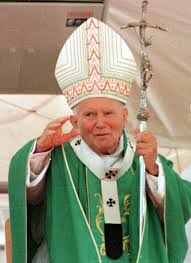CHICAGO, Illinois — Two modern popes will be fast-tracked to sainthood by the Catholic Church this April 27– Pope John XXIII and Pope John Paul II. Despite my being a Methodist, I feel an unspeakable joy in witnessing in our age the canonization of these two religious leaders whose papacies I’ve followed closely through news reports.
When Pope John XXIII convened the Second Vatican Council on Oct. 11, 1962, I personally felt the change in our lives. Growing up as a Protestant in our hometown of Arayat, Pampanga, was difficult. There were only about seven families attending a small Methodist Church in our town where Catholic practices and traditions remained as described by Jose Rizal in his novels.
The travails of a minority dawned upon us very darkly. The 50 years of American occupation, which brought in Methodism, did little to diminish the intolerance of those of the dominant faith.
Pope John XXIII’s actions had profound impact upon me as a student of architecture at the Pontifical University (UST). In the requirement for graduation in 1965, I had chosen to argue a thesis for an “Interfaith Center at the Mindanao State University.” The jury gave me a favorable verdict.
Ecumenism
I savored films like “Lilies of the Fields,” which won the Best Picture Oscar Award of 1963 plus the Best Actor Award for Sidney Poitier who played a black (Baptist) handyman who helped six German nuns build a chapel in a desert in Arizona.
The Second Vatican Council brought changes like the Mass being celebrated in languages understood by the faithful. (Contrary to common belief, John XXIII actually preferred Latin, but he deferred to the majority of the Ecumenical Council who recommended the change. Who said the Church was undemocratic?)
Wikipedia narrates the following:
“Unlike previous councils, it was unique as it did not issue any new dogmas, declare any anathemas, or settled any grave heresies prevailing that time. Instead, the council became ideally known for its renewal of Catholic doctrine in a modern timeline and perspective. Several institutional changes resulted from the council, such as the renewal of consecrated life with a revised charism, and ecumenical efforts towards dialogue with other religions, the notion of the Catholic Church alone brings through ultimate salvation to mankind, and the expressive participation of laity in various religious activities. The most palpable change of the council was the widespread use of vernacular language in Holy Mass instead of the Latin language.
“Of those who took part in the council’s opening session, four have become pontiffs to date: Cardinal Giovanni Battista Montini, who on succeeding Pope John XXIII took the name of Paul VI; Bishop Albino Luciani, the future Pope John Paul I; Bishop Karol Wojtyła, who became Pope John Paul II; and Father Joseph Ratzinger, present as a theological consultant, who became Pope Benedict XVI.”
First Pope to Visit Chicago
Fast forward to Oct. 5, 1979. For 40 hours, the Windy City was frenzied with excitement. The first Polish Pope was visiting Chicago where the biggest Catholic Polish population outside Warsaw was said to be residing. Additionally, John Paul II would be the first pope to ever visit the city.
Even my employer then, Sargent & Lundy, dismissed us early so we could join the 200,000 who eventually showed up at Grant Park to see the pope celebrate mass. It was my first time to see a Catholic Vicar of Christ in person—if only from a distance. (The second time was when I saw Pope Benedict VI riding the pope mobile at the St. Peter Square in Rome five years ago. He abdicated last year to pave the way to Pope Francis—the first one to come from Latin America.)
In his homily before the biggest Mass ever assembled in Chicago in 1979, John Paul II said, “Looking at you, I see people who have thrown their destinies together and now write a common history . . . This is the way America was conceived; this is what she was called to be . . . But there is another reality that I see when I look at you . . . your unity as members of the People of God.”
These are historic events and memorable words that resonate into the present—testimony to an event this month that is soon to come to pass, events and words that are beacons on our journey into the future.
